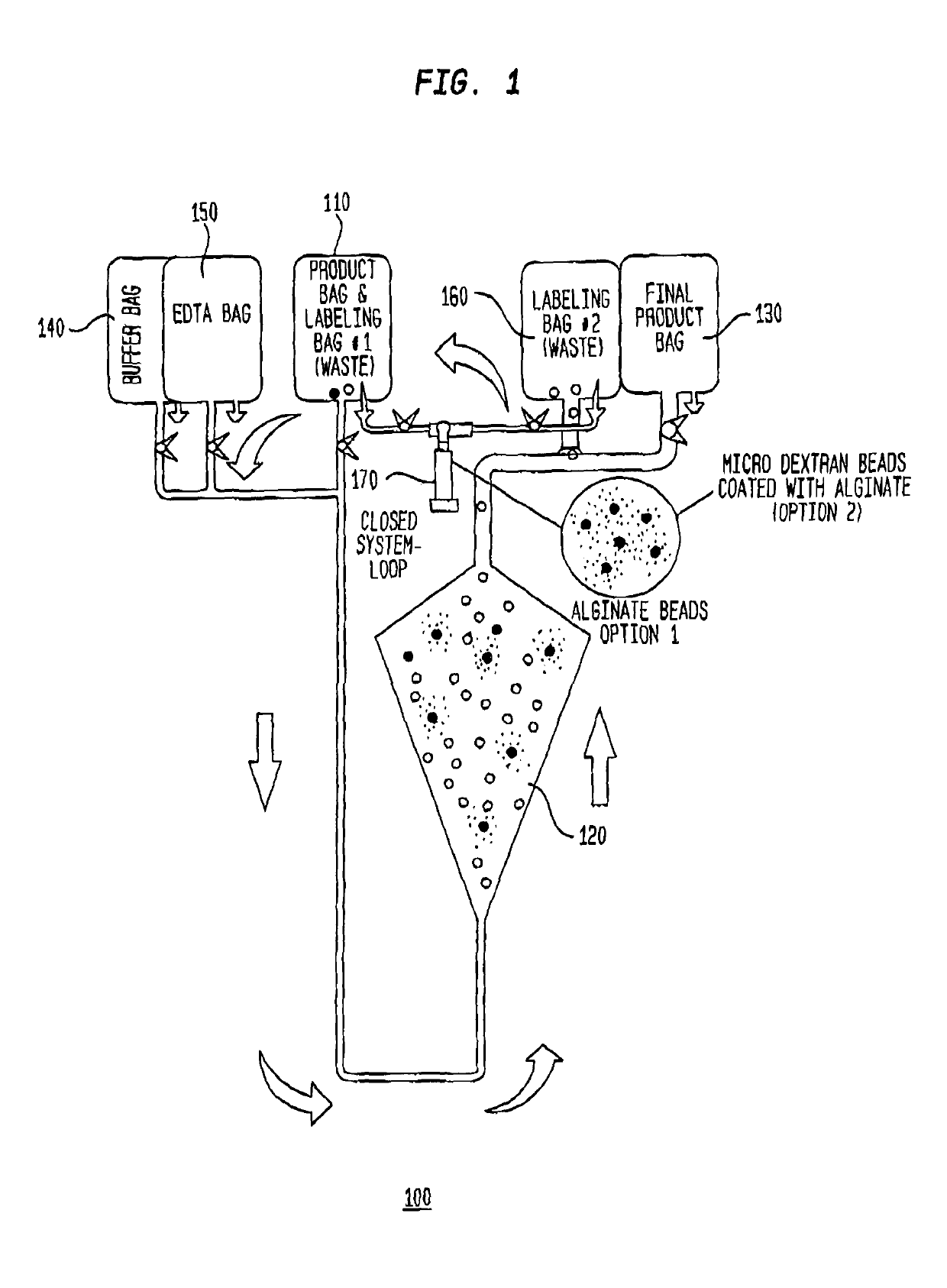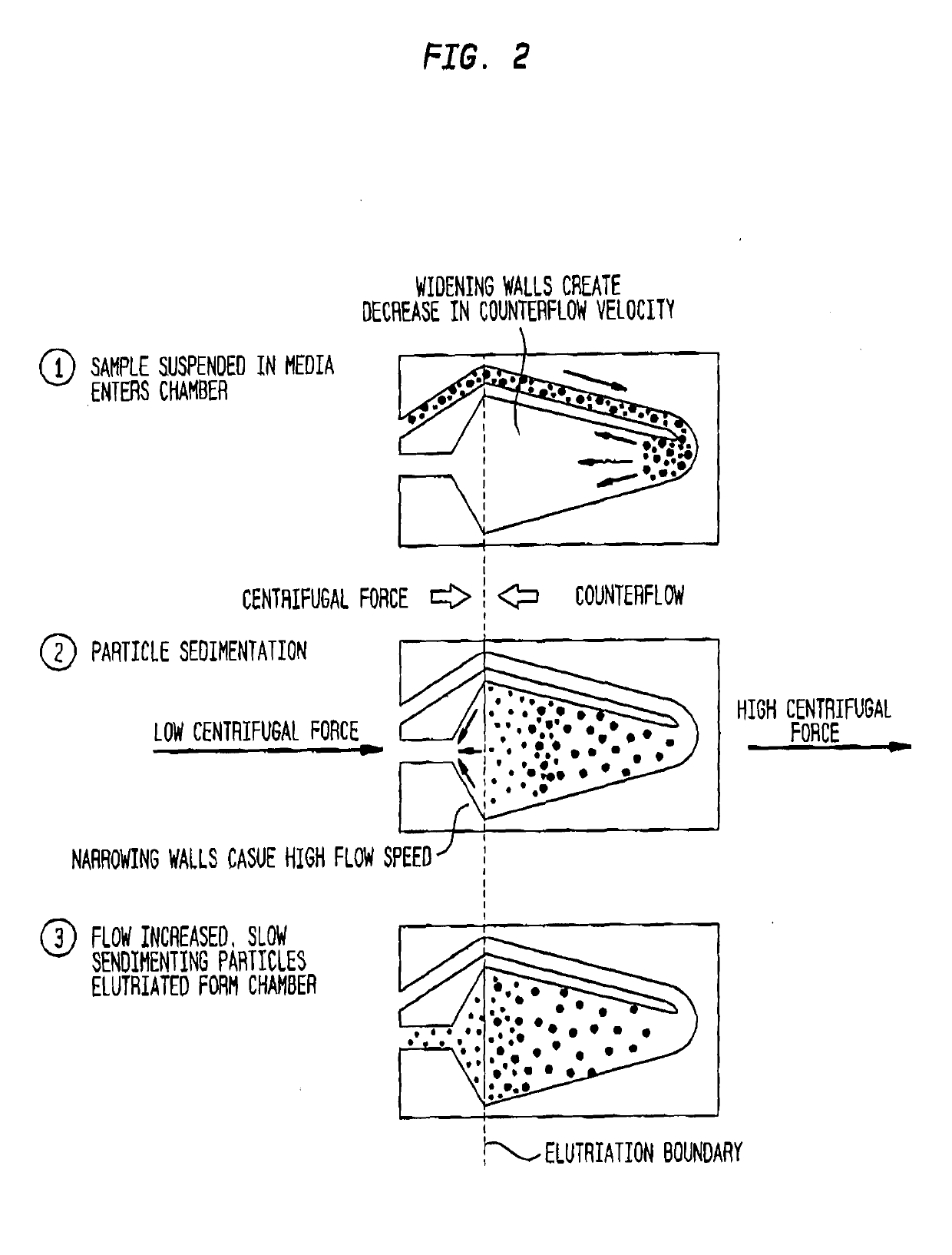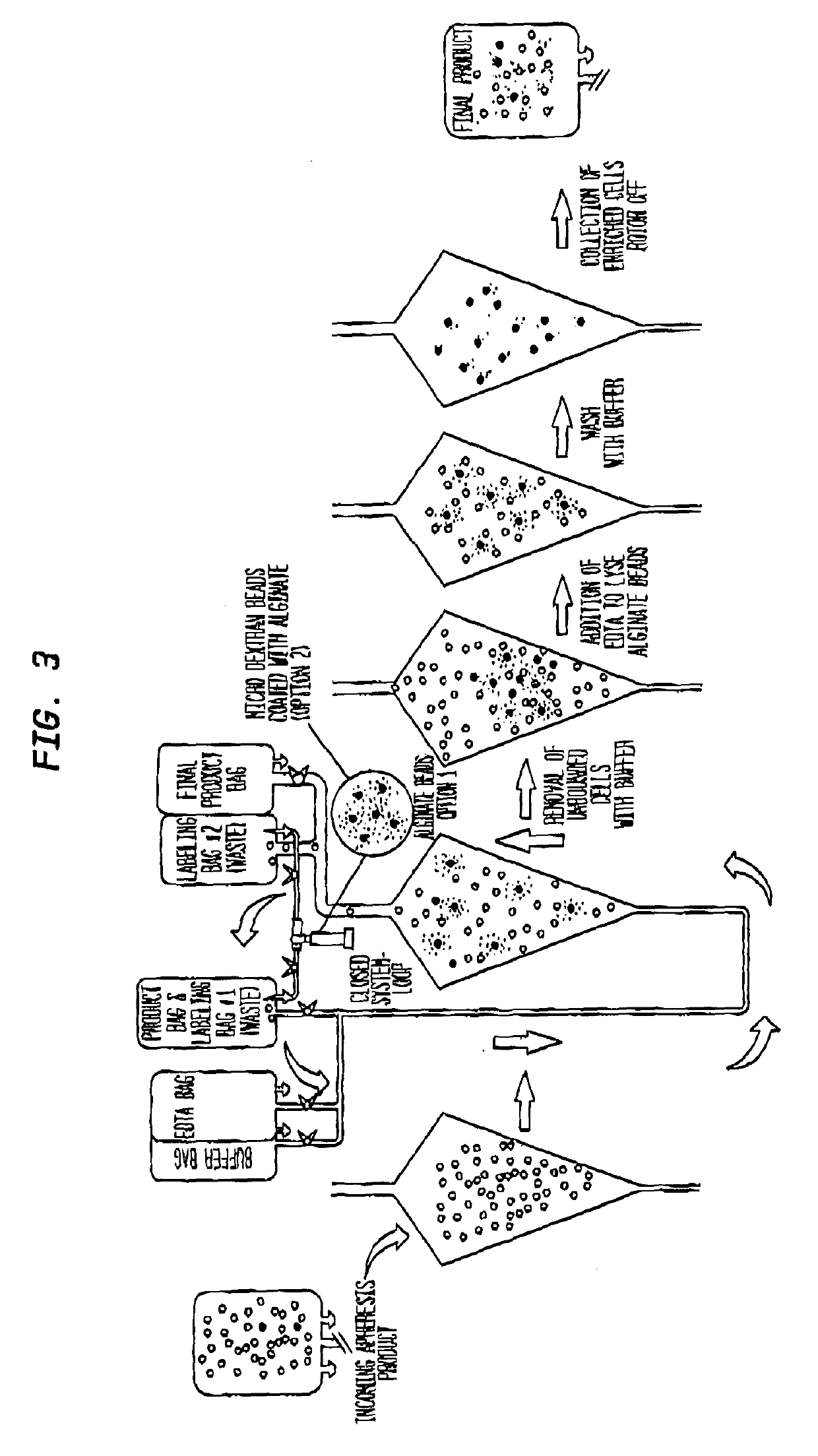A closed system for labelling and selecting live cells
a cell labeling and cell technology, applied in the field of cell labeling and cell separation, can solve the problems of microbial contamination of the selected adherent cells, the use of adhesion-based cell isolation has been restricted, and the technique does not provide high purity, so as to reduce the risk of contamination of the collected cells, reduce damage to the collected cells, and efficient viral-mediated gene transfer
- Summary
- Abstract
- Description
- Claims
- Application Information
AI Technical Summary
Benefits of technology
Problems solved by technology
Method used
Image
Examples
example 2
/ Isolation of Hematopoietic Stem Cells from a Heterogeneous Population of Cells
[0249]Hematopoietic stem cells are selected / isolated from a heterogeneous population of leukocytes using the system and method of the described invention.
[0250]A heterogeneous population of leukocytes is prepared from whole blood using apheresis. Briefly, whole blood is introduced into a spinning centrifuge chamber and separates into plasma, platelet rich plasma, leukocytes and red blood cells by gravity along the wall of the chamber. Leukocytes are removed by moving an aspiration device to the level of separated leukocytes and suspended in a physiological medium.
[0251]Capture particles are prepared by immobilizing an anti-human CD34 antibody (EPR2999, abcam, Cambridge, Mass.) on an alginate microsphere. For example, the antibody is immobilized on the porous network of the alginate microsphere during external cross-linking of the alginate with divalent or polyvalent cations (e.g., Ca2+ from CaCl2). Antibo...
example 3
ion of Cells
[0253]The term “transfection” as used herein refers to experimental introduction of foreign DNA into cells in culture, usually followed by expression of genes in the introduced DNA. Virus-mediated transfection or transduction is a process whereby transfer of genetic material (and its phenotypic expression) from one cell to another occurs by viral infection. Virus-mediated transfection is highly efficient and it is easy to achieve sustainable transgene expression in vivo owing to the viral nature of DNA integration into the host genome, and integrated DNA expression in the host.
[0254]A standard protocol for transfecting mammalian cells is as follows. 2×106 human embryonic kidney cells (293T cells; ATCC, Manassas, Va.) are seeded on a 100-cm tissue culture dish (Corning, Inc., Corning, N.Y.) and incubated until the cells are approximately 70% confluent (roughly 1-2 days). A viral vector (meaning an agent that can carry DNA into a cell or organism) is prepared by adding an ...
PUM
| Property | Measurement | Unit |
|---|---|---|
| volume | aaaaa | aaaaa |
| mean diameter | aaaaa | aaaaa |
| molecular weights | aaaaa | aaaaa |
Abstract
Description
Claims
Application Information
 Login to View More
Login to View More - R&D
- Intellectual Property
- Life Sciences
- Materials
- Tech Scout
- Unparalleled Data Quality
- Higher Quality Content
- 60% Fewer Hallucinations
Browse by: Latest US Patents, China's latest patents, Technical Efficacy Thesaurus, Application Domain, Technology Topic, Popular Technical Reports.
© 2025 PatSnap. All rights reserved.Legal|Privacy policy|Modern Slavery Act Transparency Statement|Sitemap|About US| Contact US: help@patsnap.com



